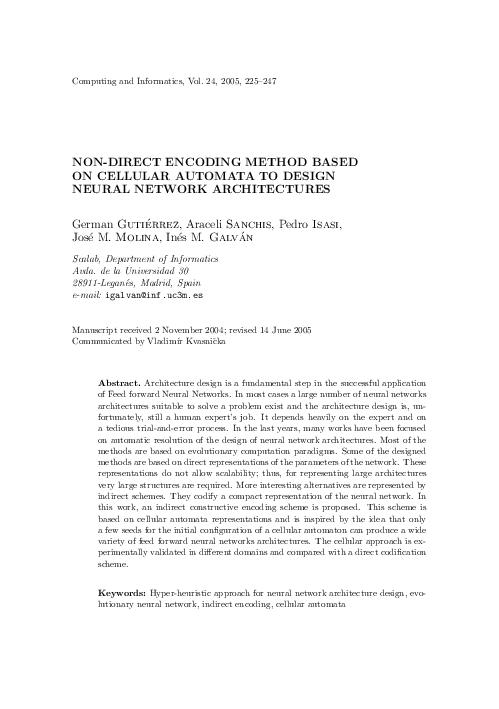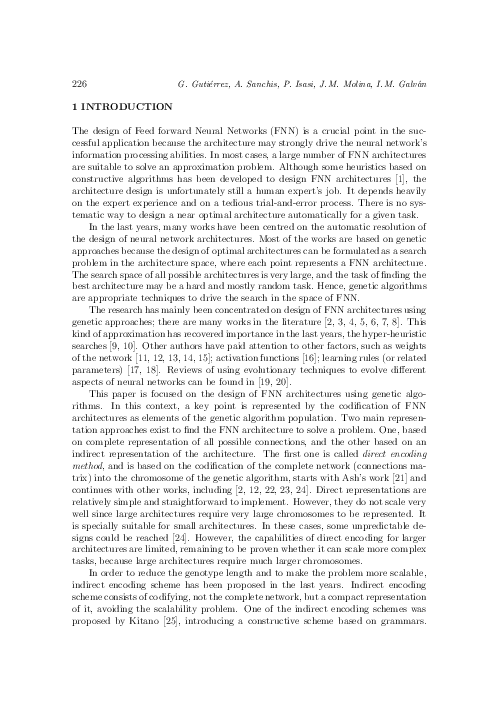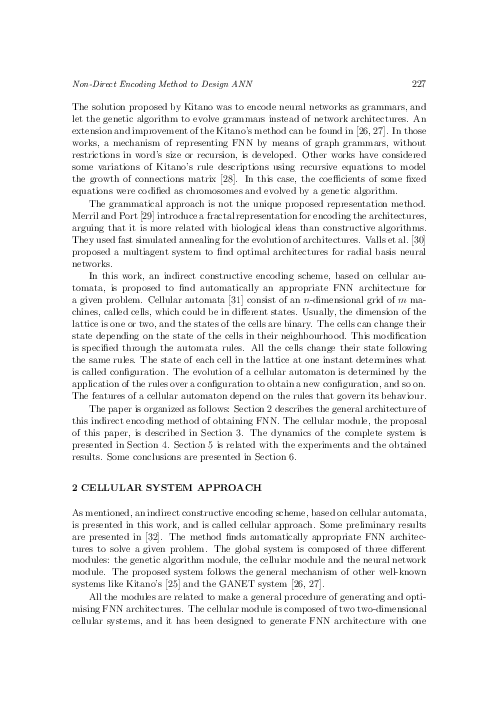Non-Direct Encoding Method Based on Cellular Automata to Design Neural Network Architectures
keywords: Hyper-heuristic approach for neural network architecture design, evolutionary neural network, indirect encoding, cellular automata
Architecture design is a fundamental step in the successful application of Feed forward Neural Networks. In most cases a large number of neural networks architectures suitable to solve a problem exist and the architecture design is, unfortunately, still a human expert's job. It depends heavily on the expert and on a tedious trial-and-error process. In the last years, many works have been focused on automatic resolution of the design of neural network architectures. Most of the methods are based on evolutionary computation paradigms. Some of the designed methods are based on direct representations of the parameters of the network. These representations do not allow scalability; thus, for representing large architectures very large structures are required. More interesting alternatives are represented by indirect schemes. They codify a compact representation of the neural network. In this work, an indirect constructive encoding scheme is proposed. This scheme is based on cellular automata representations and is inspired by the idea that only a few seeds for the initial configuration of a cellular automaton can produce a wide variety of feed forward neural networks architectures. The cellular approach is experimentally validated in different domains and compared with a direct codification scheme.
reference: Vol. 24, 2005, No. 3, pp. 225–247


